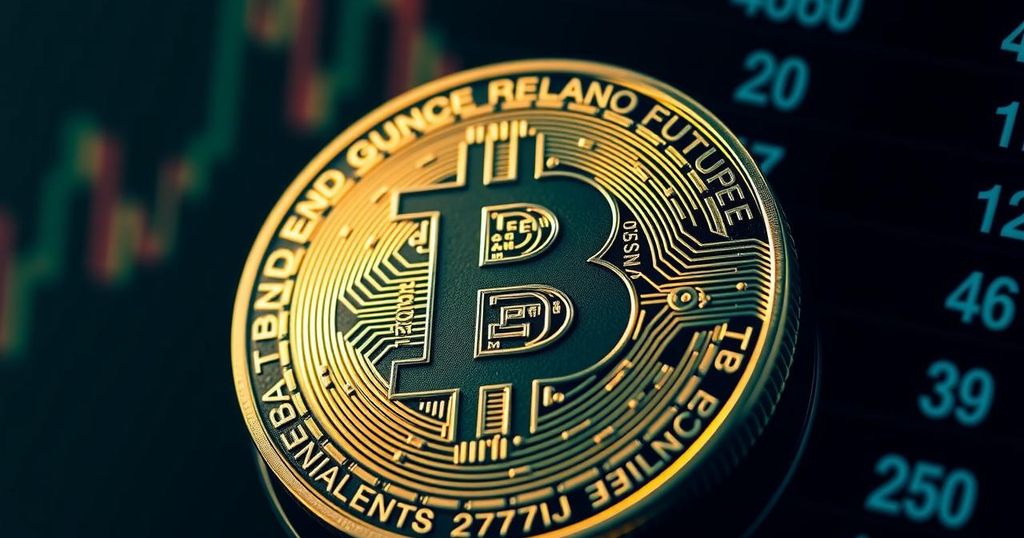Expected Impact of Fed Rate Cuts on Cryptocurrency Markets
The Federal Reserve’s recent interest rate cuts are expected to positively affect cryptocurrency markets, increasing liquidity and demand for riskier assets, according to Nirun Fuwattananukul, CEO of BINANCE TH. Historically, rate cuts have led to increased cryptocurrency valuations, particularly Bitcoin. Factors such as the Bitcoin halving and the introduction of spot ETFs may enhance this trend, although uncertainties remain about the extent of the cuts’ impact.
The recent announcement by the Federal Reserve regarding cuts in interest rates is anticipated to significantly influence the cryptocurrency markets, as articulated by Nirun Fuwattananukul, the Chief Executive Officer of BINANCE TH, on Monday. This decision has intensified optimism among crypto investors, who are already enthused by developments emerging from last week’s Federal Open Market Committee (FOMC) meeting. Nirun Fuwattananukul stated, “We expect the recent rate cuts to have a sizable impact on digital asset prices. Lower interest rates increase liquidity in the financial system, driving up demand for higher-yielding, riskier assets, including crypto.” He highlighted that this move signifies a considerable deviation from the Federal Reserve’s former approach. In the aftermath of the Covid-19 pandemic, the Federal Reserve implemented eleven rate hikes within a span of just over a year, aiming to manage inflation without prompting an economic recession. Historically, assets such as Bitcoin have exhibited a negative response to rate hikes intended to suppress inflation. In contrast, rate cuts are typically perceived as favorable for cryptocurrencies, which are categorized as risk assets. Notably, Bitcoin experienced a remarkable 375% increase between February 2020 and February 2022, coinciding with a period when interest rates were near zero. The implications of lower interest rates are expected to include: 1. Reduced borrowing costs, which may elevate capital inflows into riskier assets such as cryptocurrencies. 2. An increased attractiveness of Bitcoin as an anti-inflationary investment amid rising inflation concerns. 3. A potential depreciation of the US dollar, thus enhancing the allure of cryptocurrencies as a safeguard against currency devaluation. In addition to macroeconomic influences, several cryptocurrency-specific dynamics may also affect market performance. These include: – The recent Bitcoin halving, which has historically led to price surges within 6 to 18 months. – The advent of spot exchange-traded funds (ETFs), which may facilitate smoother transitions between equity markets and the cryptocurrency sphere. – Seasonal price trends, with historical patterns indicating upward price momentum commencing from October following a typically weaker September. Nirun expressed, “The recent Bitcoin halving and the availability of spot ETFs could increase liquidity from rate cuts to flow into crypto markets.” Despite the generally optimistic outlook, experts express caution regarding the uncertainties surrounding the effects of Federal Reserve rate cuts on the digital asset market. While Nirun acknowledges these uncertainties, he points to prevailing historical trends along with distinctive crypto-specific factors that bolster confidence in the potential for growth catalyzed by these policy adjustments.
The Federal Reserve’s decisions on interest rates play a fundamental role in shaping liquidity in the financial system and influencing investor behavior across various asset classes. Following a lengthy period of deliberate rate hikes to control inflation, the recent shift to rate cuts marks a potential turning point for risk assets, including cryptocurrencies. The dynamics between economic policy, investor sentiment, and cryptocurrency valuations form a multifaceted landscape that investors must navigate, especially in the context of recent significant events in the crypto market such as the Bitcoin halving and the introduction of spot ETFs.
In conclusion, the expectation surrounding the Federal Reserve’s rate cuts suggests a potentially favorable environment for cryptocurrency markets. Based on Nirun Fuwattananukul’s insights, these policy changes may enhance liquidity and increase interest in digital assets, presenting a departure from prior restrictive measures. Historical trends coupled with specific factors unique to the cryptocurrency space, such as the recent Bitcoin halving and the introduction of spot ETFs, may further contribute to a revitalized market. However, caution remains warranted as the ultimate impact of these developments unfolds.
Original Source: www.nationthailand.com








Post Comment